
The Gibson SG is a solid-body electric guitar model introduced by Gibson in 1961, following on from the 1952 Gibson Les Paul. It remains in production today in many variations of the initial design. SG stands for "solid guitar".

The Gibson Les Paul is a solid body electric guitar that was first sold by the Gibson Guitar Corporation in 1952. The guitar was designed by factory manager John Huis and his team with input from and endorsement by guitarist Les Paul. Its typical design features a solid mahogany body with a carved maple top and a single cutaway, a mahogany set-in neck with a rosewood fretboard, two pickups with independent volume and tone controls, and a stoptail bridge, although variants exist.

Epiphone is an American musical instrument brand that traces its roots to a musical instrument manufacturing business founded in 1873 by Anastasios Stathopoulos in İzmir, Ottoman Empire, and moved to New York City in 1908. After taking over his father's business, Epaminondas Stathopoulos named the company "Epiphone" as a combination of his own nickname "Epi" and the suffix "-phone" in 1928, the same year it began making guitars. From the 1930s through to the early 1950s, Epiphone produced a range of both acoustic and (later) electrified archtop guitars that rivalled those produced by Gibson and were the instruments of choice of many professionals; a smaller range of flat-top guitars were also produced, some designations of which were later continued during the Gibson-owned era for the company.

The Gibson ES-335 is a semi-hollow body semi-acoustic guitar introduced by the Gibson Guitar Corporation as part of its ES series in 1958. It has a solid maple wood block running through the center of its body with hollow upper bouts and two violin-style f-holes cut into the top over the hollow chambers. Gibson has released numerous variations and models based on the ES-335.
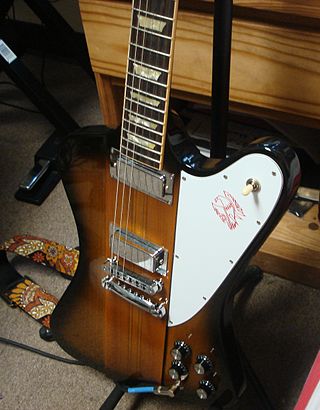
The Gibson Firebird is a solid-body electric guitar manufactured by Gibson beginning in 1963.

Hagström is a musical instrument manufacturer in Älvdalen, Dalecarlia, Sweden. Their original products were accordions that they initially imported from Germany and then Italy before opening their own facility in 1932. During the late 1950s, the company started making electric guitars and later amplifiers. The early guitars were heavily influenced by the accordion production and had a special look and feel. Hagström were the first company to mass-produce 8 string bass guitars as well as the first to build a guitar/synthesizer hybrid. The company ceased production in 1983. In 2004 the brand was resurrected and has since been building guitars both in Europe and in Asia. Throughout the years Hagström has expanded their line of products since the restart of the brand and re-introduced such Hagstrom classics as their famous Hagström H8, an 8 string bass. Hagstrom has also introduced new models and designs, where the firm still operates out of Sweden.

Frank Anthony Iero, Jr. is an American musician, singer, songwriter, and record producer, best known as the rhythm guitarist and backup vocalist of the rock band My Chemical Romance and as a guitarist in the supergroup L.S. Dunes. He was also the lead vocalist of the post-hardcore band Leathermouth. He has a solo project titled Frank Iero and the Future Violents. He released his debut solo album titled Stomachaches on August 26, 2014.
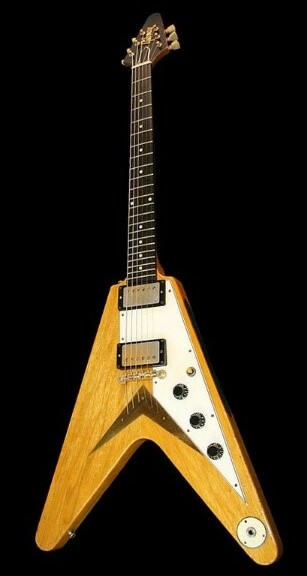
The Gibson Flying V is an electric guitar model that was originally introduced by Gibson in 1958. The Flying V offered a brand new, radical, "futuristic" body design, much like its siblings: the Explorer, which was released the same year, and the Moderne, which was designed in 1957 but not released until 1982. The initial run of guitars used a distinctive wood of the Limba tree marketed by Gibson under the trade name "korina"; later models used more conventional woods.

The G-400 is an Epiphone solid body electric guitar model produced as a more modestly priced version of the famous Gibson SG. Currently, Epiphone is a subsidiary of Gibson and manufactures the G-400 and other budget models at a lower cost in Asia. Visually and ergonomically, it is almost identical to a 1962 SG.

The P-90 is a single coil electric guitar pickup produced by Gibson Guitar Corporation since 1946, as well as other vendors. Compared to other single coil designs, such as the Fender single coil, the bobbin for a P-90 is wider but shorter. The Fender style single coil is wound in a taller bobbin, but the wires are closer to the individual poles. This makes the P-90 produce a somewhat warmer tone with less edge and brightness, As with other single-coil pickups, the P-90 is subject to AC hum unless some form of cancellation is used.
The Gibson Les Paul Junior is a solid-body electric guitar introduced in 1954 as an affordable, entry-level Les Paul. It was first released with a single-cutaway body style; models with a double-cutaway body style were introduced in 1958. The Junior continued through the first three years of the Les Paul/SG body redesign. The initial run was discontinued in 1963.
The Gibson Melody Maker is an electric guitar made by Gibson Guitar Corporation. It has had many body shape variations since its conception in 1959.
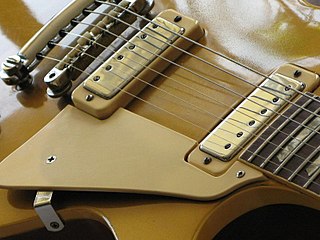
The mini-humbucker is a humbucking guitar pickup. It was originally created by the Epiphone company. The mini-humbucker resembles a Gibson PAF humbucker, but is narrower in size and senses a shorter length of string vibration. This produces clearer, brighter tones that are quite unlike typical Gibson sounds. It fits in between single-coils and full-sized humbuckers in the tonal spectrum. It is frequently used in jazz guitars, mounted under the fingerboard or on the pickguard.
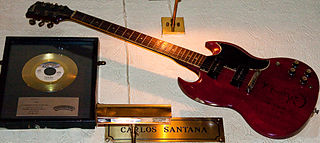
The Gibson SG Special is an electric guitar made by Gibson that has been manufactured since 1961.

The Gibson Nighthawk was a family of electric guitars manufactured by Gibson. Introduced in 1993, the Nighthawk represented a radical change from traditional Gibson designs. While its maple-capped mahogany body and set neck were reminiscent of the classic Gibson Les Paul, the Nighthawk incorporated a number of characteristics more commonly associated with Fender guitars. The Nighthawk was not a commercial success; production of all models was discontinued in 1998 after only five years.

Epiphone Genesis refers to three Genesis Series models ever produced
The Epiphone Sheraton is a thinline semi-hollow body electric guitar. Though the Sheraton and all its variations were introduced under the ownership of the Gibson Guitar Corporation, Epiphone is the exclusive manufacturer.
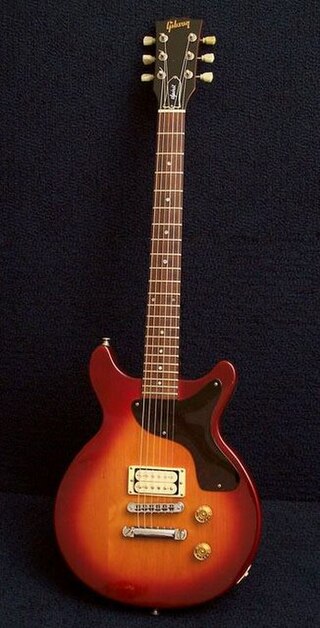
The Gibson Spirit was a guitar model sold under Gibson and Epiphone USA nameplates in the 1980s. This article does not refer to the made-in-China Spirit guitar sold under the Gibson Baldwin Music Education nameplate.
The Epiphone Coronet is an entry-level guitar previously manufactured by Epiphone. The guitar has been manufactured a number of times since its first production on the 1950s.















